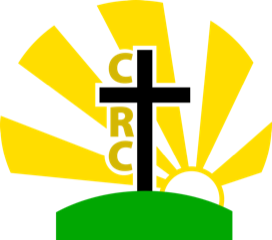"The fatal suffering of Jesus Christ is one of the most well-established facts of ancient history. Even in today’s modern age of science and technology, there is a virtual consensus among New Testament scholars, both conservative and liberal, that Jesus died on the cross, that He was buried in the tomb of Joseph of Arimathea, and that His death drove His disciples to despair. The best medical minds of ancient and modern times have demonstrated beyond a shadow of a doubt that Christ’s physical trauma was fatal.11
Taking into account today’s medical knowledge, we can reconstruct our Savior’s suffering. His torment begins in the Garden of Gethsemane after the emotional Last Supper. There Jesus experiences a medical condition known as hermatidrosis. Tiny capillaries in His sweat glands rupture, mixing sweat with blood. As a result, Christ’s skin becomes extremely fragile.
The same night, Jesus is betrayed by Judas, disowned by Peter, and arrested by the temple guard. Before Caiaphas the High Priest, Jesus is mocked, spat upon, and beaten. The next morning, Jesus — battered, bruised, and bleeding — is led into the Praetorium. There He is stripped and subjected to the brutality of Roman flogging. A whip replete with razor sharp bones and lead balls reduces His body to “quivering ribbons of bleeding flesh.” As Christ slumps into the pool of His own blood, the soldiers throw a scarlet robe across His shoulders, thrust a scepter into His hands, and press sharp thorns into His scalp.
After the soldiers mock Jesus, they take the scepter out of His hand and repeatedly strike Him on the head. A heavy wooden beam is thrust upon Christ’s bleeding body, now in critical condition, and He is led away to a place called Golgotha. There the Lord experiences ultimate physical torture in the form of the cross. The Roman system of crucifixion had been finely tuned to produce maximum pain. In fact, the word excruciating (literally “out of the cross”) had to be invented to codify its horror.
At “the place of the skull,” the Roman soldiers drive thick seven-inch iron spikes through Christ’s hands and feet. Waves of pain pulsate through His body as the nails lacerate His nerves. Breathing becomes an agonizing endeavor as Christ pushes His tortured body upward to gasp small gulps of air. In the ensuing hours He experiences cycles of joint-wrenching cramps, intermittent asphyxiation, and excruciating pain as His lacerated back moves up and down against the rough timber of the cross.
As the chill of death creeps through His body, Jesus cries out, “‘Eloi, Eloi, lama sabachthani?’ — which means, ‘My God, my God, why have you forsaken me?’” In that anguished cry is encapsulated the greatest agony of all. For on the cross Christ is bearing the sin and suffering of all humanity. Then with His passion complete, Jesus gives up His spirit.
Shortly thereafter a Roman legionnaire drives his spear through the fifth interspace between the ribs, upward through the pericardium and into Christ’s heart. Immediately, there rushes forth blood and water, demonstrating conclusively that Jesus has suffered fatal torment.
In light of all the evidence, to believe that Jesus merely swooned stretches credulity beyond the breaking point. It means that Christ survived six trials, lack of sleep, the scourge, being spiked to a cross, and a spear wound in His side."
–Excerpt from the article, “The F.E.A.T. that demonstrates the Fact of the Resurrection” by Hank Hanegraaff
-------------------
So grateful LORD!
Now it was the day of Preparation of the Passover. It was about the sixth hour. He said to the Jews, "Behold your King!" They cried out, "Away with him, away with him, crucify him!" Pilate said to them, "Shall I crucify your King?" The chief priests answered, "We have no king but Caesar." So he delivered him over to them to be crucified.
So they took Jesus, and he went out, bearing his own cross, to the place called The Place of a Skull, which in Aramaic is called Golgotha. There they crucified him, and with him two others, one on either side, and Jesus between them. Pilate also wrote an inscription and put it on the cross. It read, "Jesus of Nazareth, the King of the Jews." Many of the Jews read this inscription, for the place where Jesus was crucified was near the city, and it was written in Aramaic, in Latin, and in Greek. So the chief priests of the Jews said to Pilate, "Do not write, 'The King of the Jews,' but rather, 'This man said, I am King of the Jews.'" Pilate answered, "What I have written I have written." When the soldiers had crucified Jesus, they took his garments and divided them into four parts, one part for each soldier; also his tunic. But the tunic was seamless, woven in one piece from top to bottom, so they said to one another, "Let us not tear it, but cast lots for it to see whose it shall be." This was to fulfill the Scripture which says, "They divided my garments among them, and for my clothing they cast lots."
So the soldiers did these things, but standing by the cross of Jesus were his mother and his mother's sister, Mary the wife of Clopas, and Mary Magdalene. When Jesus saw his mother and the disciple whom he loved standing nearby, he said to his mother, "Woman, behold, your son!" Then he said to the disciple, "Behold, your mother!" And from that hour the disciple took her to his own home.
After this, Jesus, knowing that all was now finished, said (to fulfill the Scripture), "I thirst." A jar full of sour wine stood there, so they put a sponge full of the sour wine on a hyssop branch and held it to his mouth. When Jesus had received the sour wine, he said, "It is finished," and he bowed his head and gave up his spirit.
(Joh 19:14-30 ESV)

